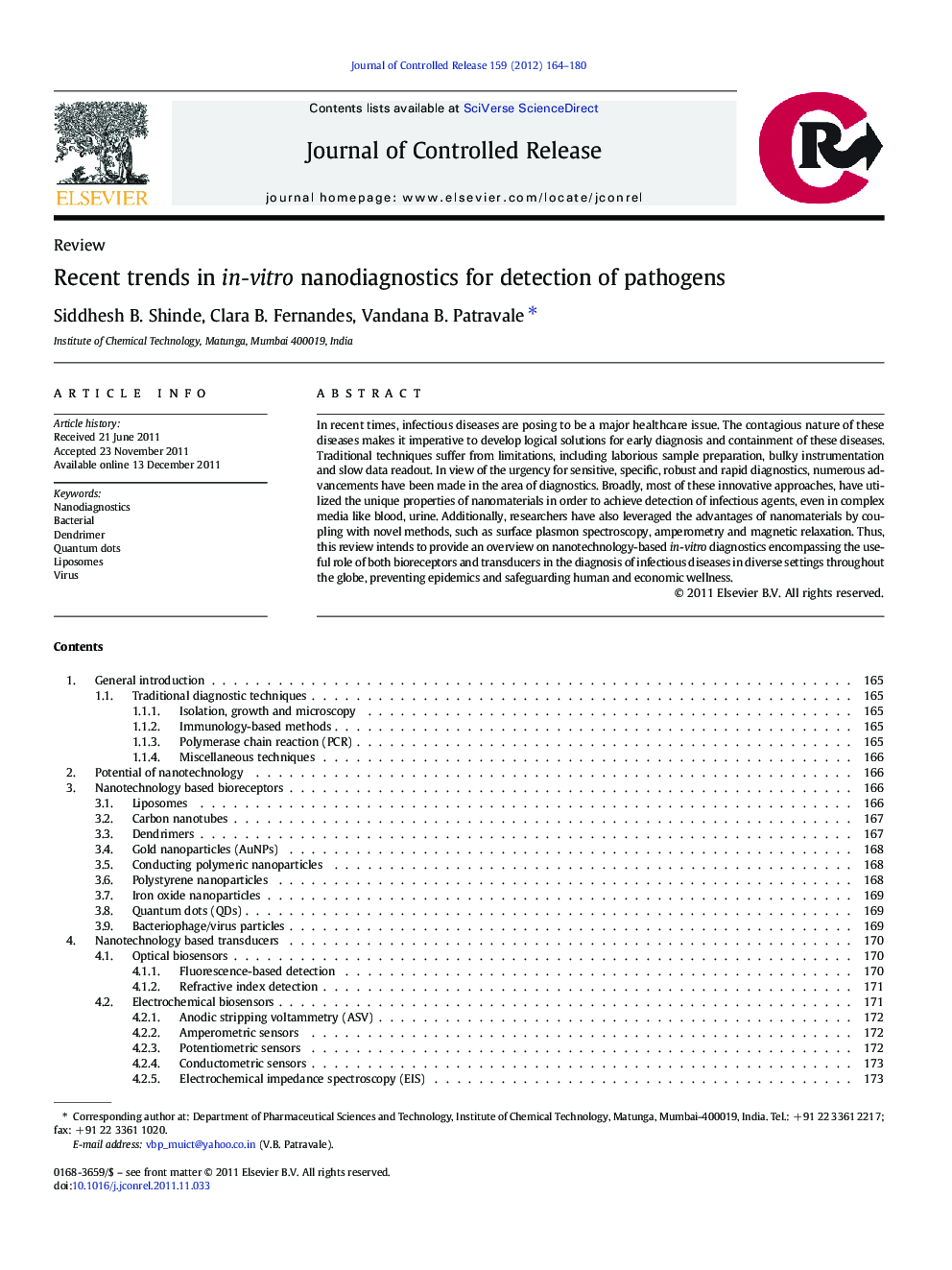| Article ID | Journal | Published Year | Pages | File Type |
|---|---|---|---|---|
| 1424801 | Journal of Controlled Release | 2012 | 17 Pages |
In recent times, infectious diseases are posing to be a major healthcare issue. The contagious nature of these diseases makes it imperative to develop logical solutions for early diagnosis and containment of these diseases. Traditional techniques suffer from limitations, including laborious sample preparation, bulky instrumentation and slow data readout. In view of the urgency for sensitive, specific, robust and rapid diagnostics, numerous advancements have been made in the area of diagnostics. Broadly, most of these innovative approaches, have utilized the unique properties of nanomaterials in order to achieve detection of infectious agents, even in complex media like blood, urine. Additionally, researchers have also leveraged the advantages of nanomaterials by coupling with novel methods, such as surface plasmon spectroscopy, amperometry and magnetic relaxation. Thus, this review intends to provide an overview on nanotechnology-based in-vitro diagnostics encompassing the useful role of both bioreceptors and transducers in the diagnosis of infectious diseases in diverse settings throughout the globe, preventing epidemics and safeguarding human and economic wellness.
Graphical abstractFigure optionsDownload full-size imageDownload high-quality image (113 K)Download as PowerPoint slide
